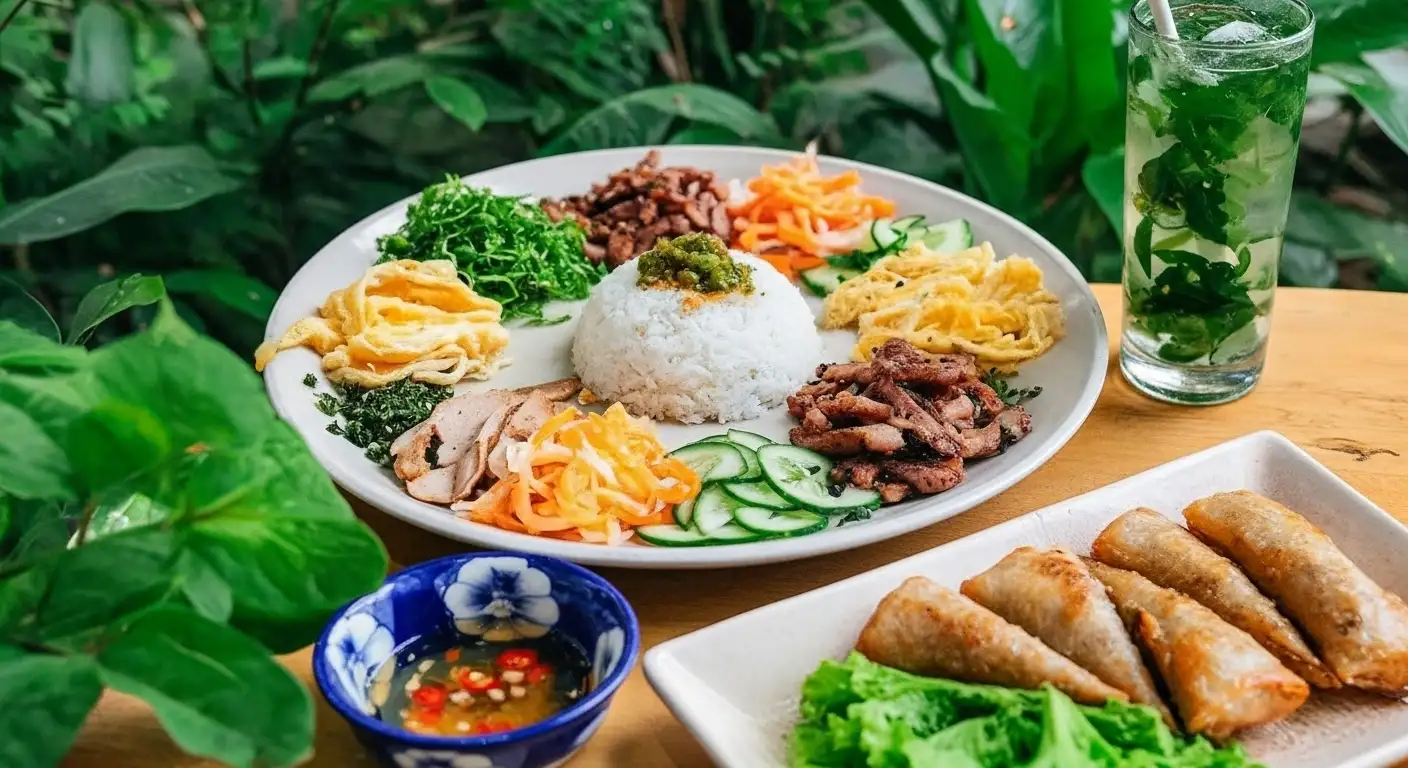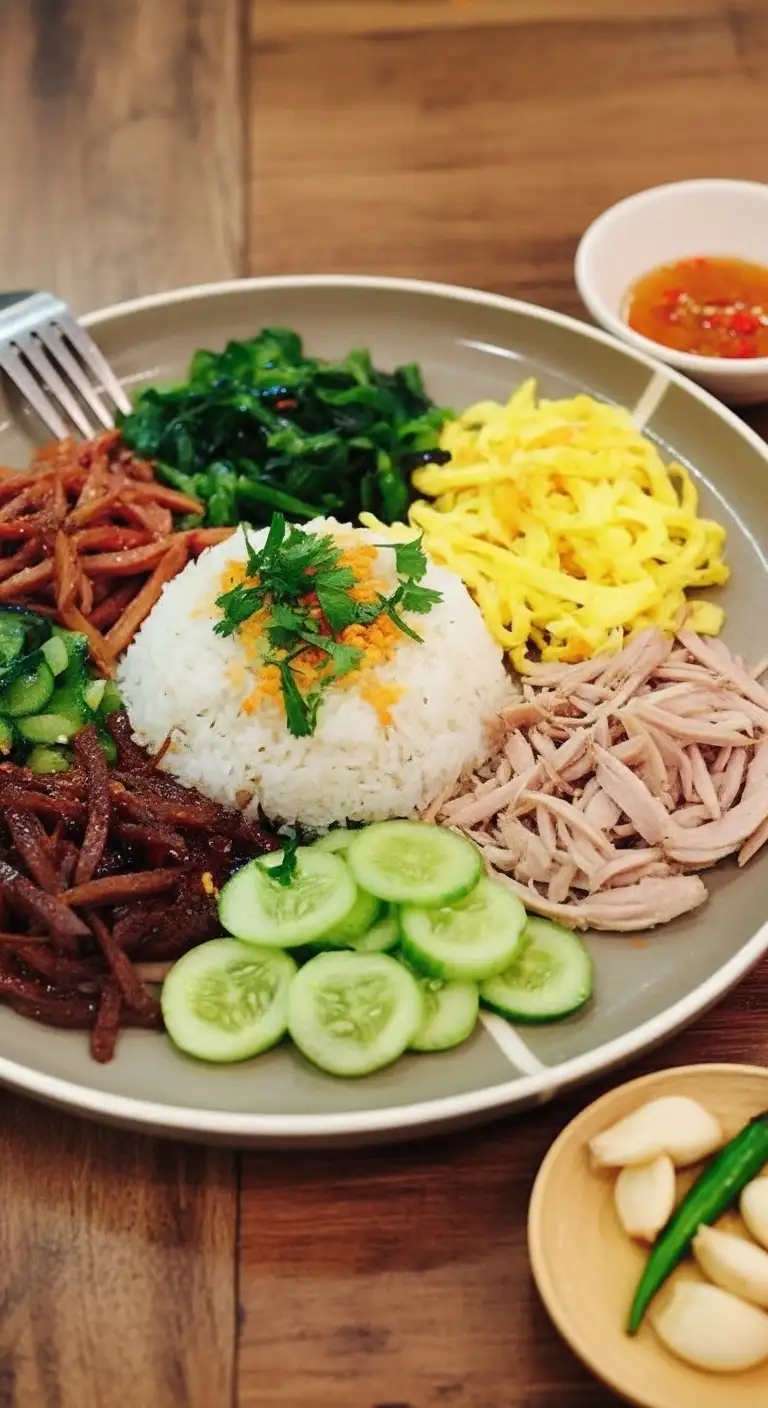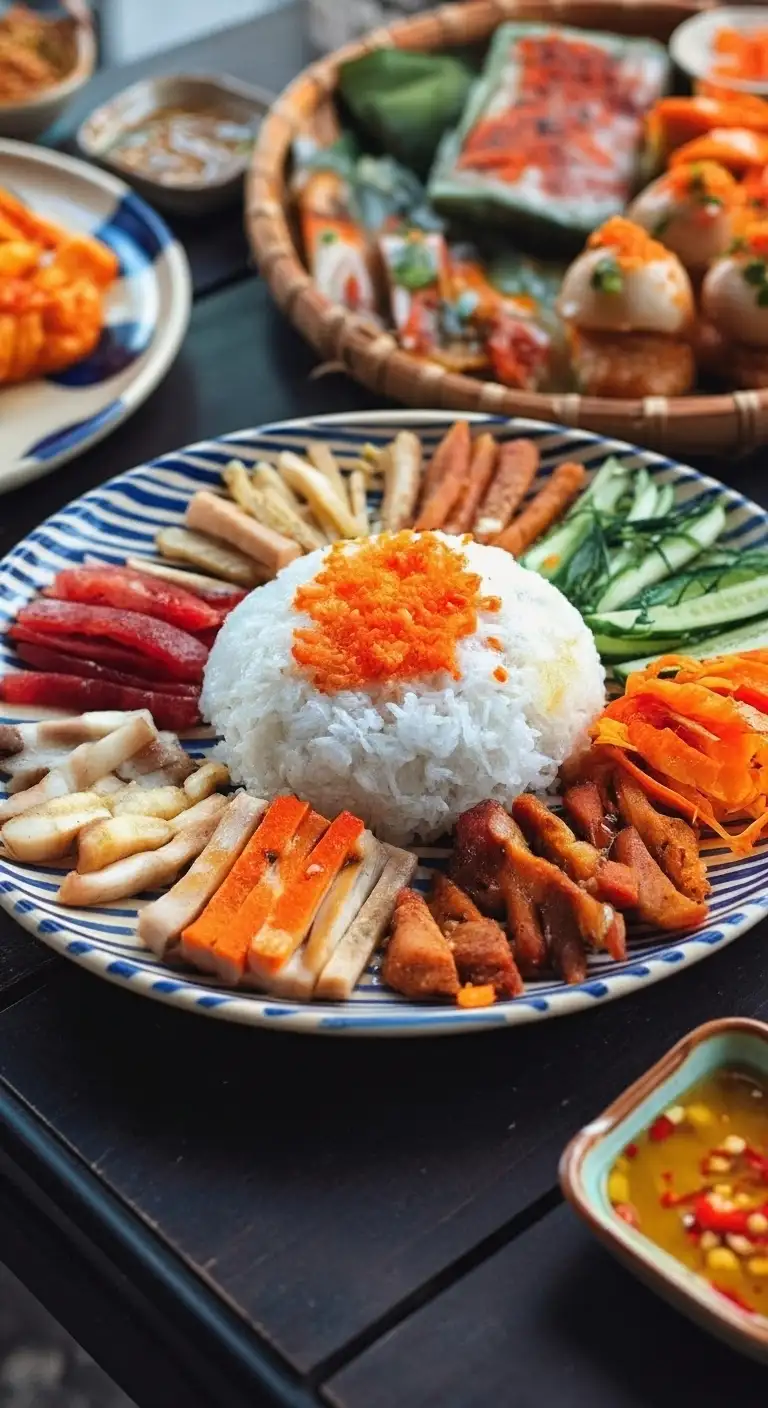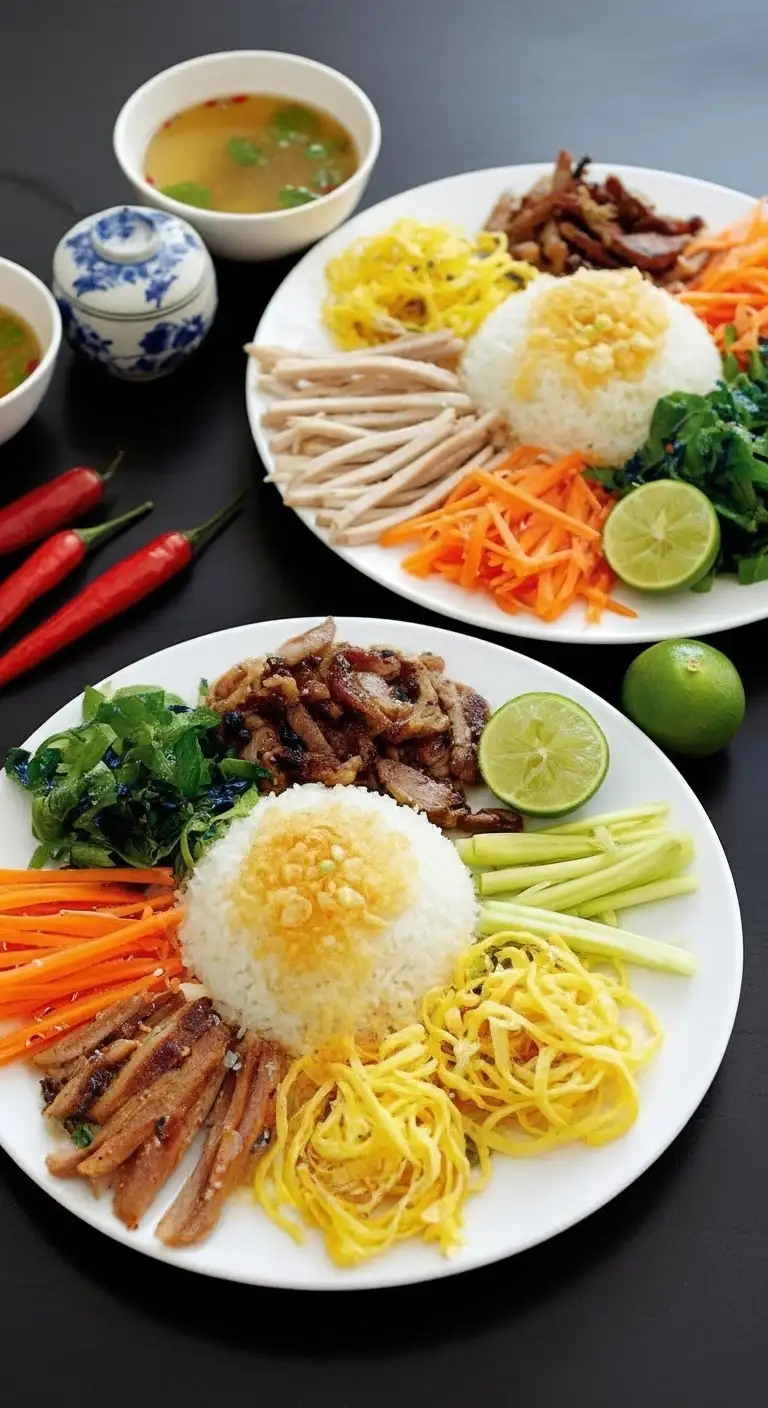Cơm Âm Phủ (pronounced “Coom Um Phoo”) is one of the most uniquely named and historically fascinating dishes in Vietnamese cuisine. Originating in the former Imperial Capital of Huế (Central Vietnam), its name translates dramatically to “Purgatory Rice” or “Hell Rice,” a moniker that sharply contrasts with its beautiful presentation and heavenly taste.
This dish is a signature specialty of Huế, reflecting the region’s royal culinary heritage with its meticulous arrangement and balanced flavors.
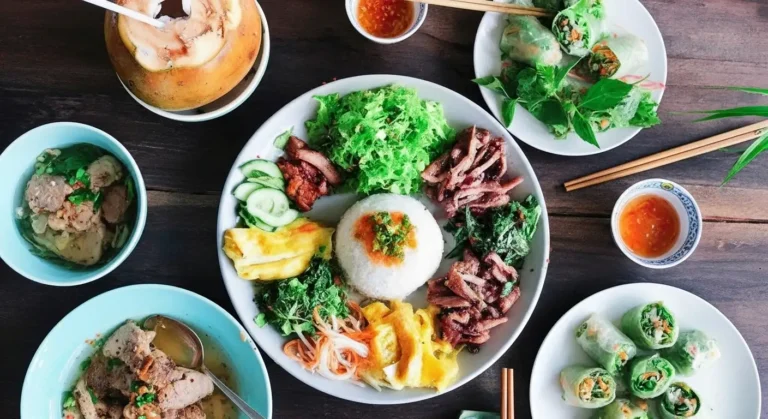
Cơm Âm Phủ: The Basics
The Name’s Origin: The unusual name has a famous folk tale associated with it. Legend says that a former emperor, traveling in disguise, became hungry late one night and stopped at a small eatery that was only open very late (or in some versions, simply poorly lit). The emperor, feeling as if he were eating a satisfying meal in “purgatory,” bestowed the name Quán Âm Phủ (“Purgatory Eatery”) upon the restaurant, and the name stuck to the dish itself.
The Concept: At its heart, Cơm Âm Phủ is a vibrant mixed rice dish. It is a plate of plain white rice surrounded by an assortment of julienned and colorful ingredients, often arranged in a fan-like or radial pattern.
Core Ingredients (The Colors of Purgatory): The presentation is key, with each ingredient adding a distinct color and texture:
White: Steamed fragrant rice.
Red: Sliced, char-grilled or roasted pork (thịt nướng), marinated in a savory sauce.
Yellow: Thinly sliced omelet (often unseasoned duck egg for a pure yellow).
Orange/Pink: Shredded Vietnamese pork sausage (chả lụa or nem chua).
Pink/Orange: Floss made from dried, pounded shrimp (tôm chà bông).
Green: Thinly sliced cucumber and fresh herbs.
Pale Green/White: Pickled shredded vegetables (đồ chua) like carrots and daikon radish.
Varieties of Cơm Âm Phủ
Unlike a dish like Phở which has numerous regional variations, Cơm Âm Phủ is quite specific to its hometown of Huế. Its variations are mostly in the quantity and quality of the toppings used:
The Classic Version (Huế Standard): Strictly adheres to the core combination of grilled pork, shrimp floss, omelet, and julienned vegetables, emphasizing the visual symmetry and fresh herbs.
The Basic Version: In smaller or less specialized eateries, the dish may be simplified to just white rice, a small amount of shrimp floss, and a few pickled vegetables, serving as a quick, humble meal.
Modern/Upscale Versions: Contemporary restaurants sometimes elevate the dish with more elaborate cuts of meat, additional proteins like shredded chicken, or more complex pickles, but the spirit of the “combination rice” remains the same.

How to Eat Cơm Âm Phủ
Mix It Up: The traditional and intended way to eat Cơm Âm Phủ is to mix all the ingredients thoroughly on the plate before taking a bite. This ensures that every mouthful contains a harmonious blend of the cool rice, hot grilled meat, savory floss, crunchy vegetables, and soft egg.
The Soul: Dipping Sauce: The crucial component is the dipping sauce, typically a Central Vietnamese-style Nước Mắm Chua Ngọt (sweet, sour, and spicy fish sauce). The diner pours the sauce over the mixed rice and toppings to bind them together and enhance the overall flavor profile.
Enjoy Hot and Cold: The dish provides a delightful temperature and textural contrast—the rice and grilled pork are served warm, while the cucumber, herbs, and pickles are cool and refreshing.
Savory and Spicy: Reflecting the culinary preferences of Huế, Cơm Âm Phủ is savory and often has a distinct, bright chili kick from the dipping sauce.
Regional Differences
Cơm Âm Phủ is overwhelmingly a Central Vietnamese specialty, and its popularity is highly concentrated in and around Huế.
| Region | Regional Culinary Style | Cơm Âm Phủ (Prevalence and Differences) |
|---|---|---|
| Central Vietnam (Huế) | Rich, Spicy, and Meticulous. Central cuisine is known for its bold flavors and royal-inspired presentation. | The Authentic Center. This is the birthplace and definitive region for the dish. The preparation is meticulous, focused on presentation, and the flavor is characteristically spicy and savory, relying on the chili-laced nước mắm to tie the complex flavors together. |
| Southern Vietnam | Sweet, Rich, and Generous. Southern dishes often have added sugar and coconut milk. | Found in Hue-Specialty Restaurants. While available in major cities like Ho Chi Minh City, it is usually only found in restaurants specializing in Huế or Central Vietnamese cuisine. The Southern version may be slightly sweeter overall and generally uses more oil, reflecting the regional palate. |
| Northern Vietnam | Subtle, Light, and Simple. Northern cuisine emphasizes the natural taste of ingredients and avoids excessive sweetness or oil. | Rarely Found. Cơm Âm Phủ is not a native Northern dish. It is seldom featured on menus outside of specialized dining. Northern diners often prefer simpler rice dishes that are not a chaotic mix of many ingredients, such as plain rice with a single main savory dish. |
